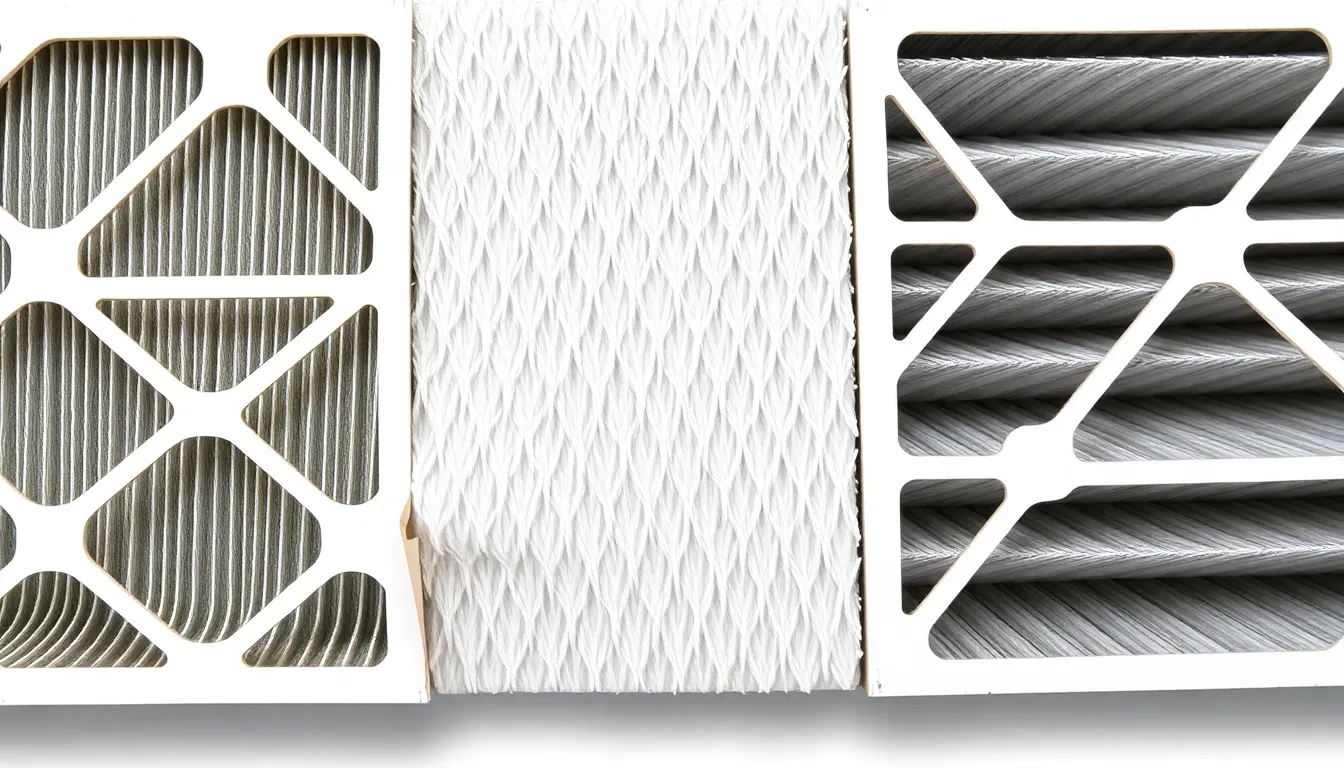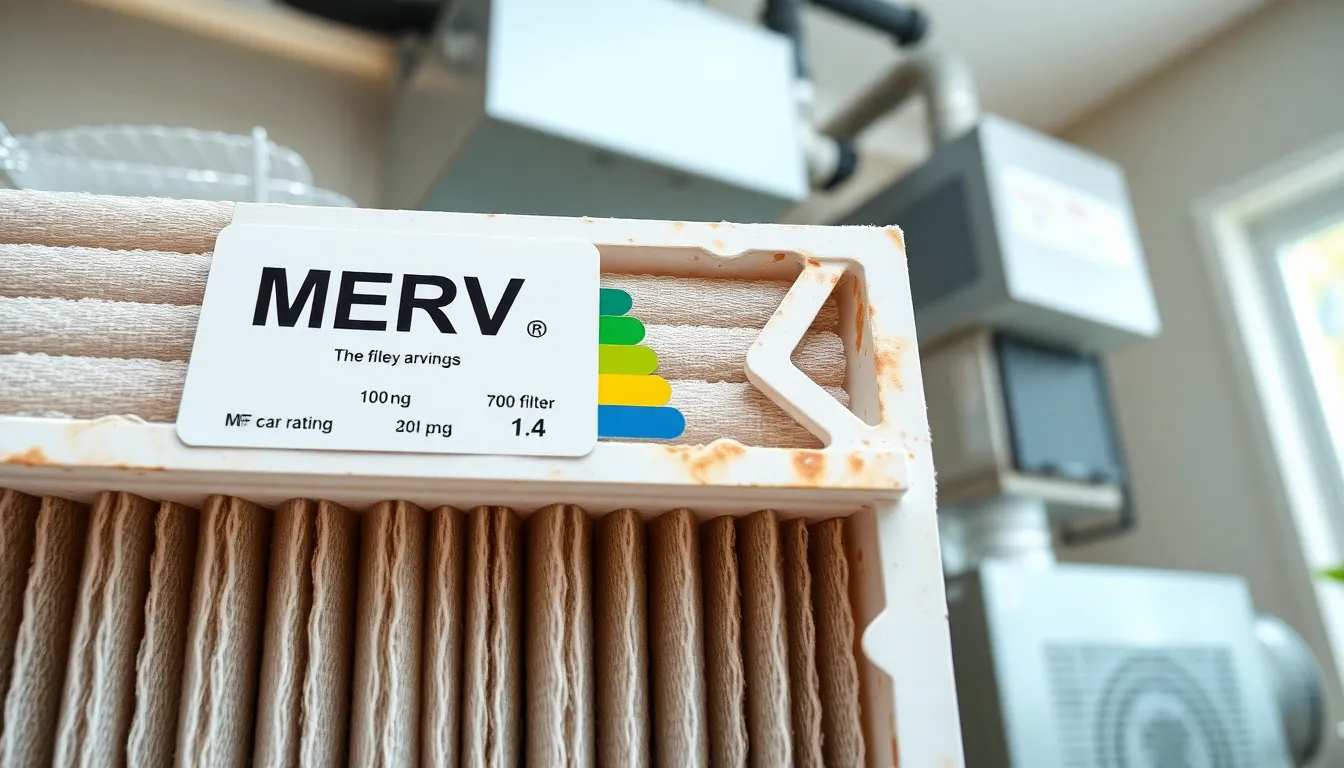When it comes to breathing easy at home, the secret might just be hiding in your air filter. Enter MERV, the mysterious acronym that sounds like a character from a sci-fi movie but is actually a crucial player in air quality. MERV stands for Minimum Efficiency Reporting Value, and it’s the superhero metric that tells you how well your air filter can tackle dust, pollen, and other pesky particles.
Table of Contents
ToggleUnderstanding MERV Ratings
MERV, or Minimum Efficiency Reporting Value, plays a critical role in evaluating air filter performance. It provides a standardized way to assess how well air filters remove various particles from indoor air.
Definition of MERV
MERV measures the efficiency of air filters in capturing airborne particles. Ratings range from 1 to 16, with higher numbers indicating better particle removal. Filters rated 1 are least effective, while those rated 16 excel in trapping smaller allergens. This rating system includes various particles such as dust mites, pollen, mold spores, and pet dander. Understanding MERV helps consumers select filters that align with their air quality needs.
Importance of MERV in Air Filters
A high MERV rating indicates superior air filtration, essential for improving indoor air quality. Filters with a MERV rating of 8 or above effectively trap allergens, making them suitable for allergy sufferers. Using filters with appropriate MERV ratings helps maintain HVAC system efficiency and prolongs equipment lifespan. Filters with MERV ratings tailored to specific environments enhance breathing comfort in homes and workplaces. Selecting the right MERV-rated filter helps ensure cleaner air and a healthier living space.
How MERV Ratings Work

MERV ratings provide vital insights into air filter performance. Understanding the MERV scale helps in selecting filters that suit specific filtration needs.
The MERV Scale
MERV ranges from 1 to 16, categorizing filters based on their efficiency. Filters rated 1 capture larger particles but miss smaller allergens. Filters rated 16 excel in trapping tiny particles like dust mites and mold spores, ensuring cleaner air. Most residential filters fall between MERV 7 and 12, striking a balance between cost and efficiency. Higher ratings often correlate with increased filter density, which may reduce airflow. Choosing the right MERV rating guarantees effective filtration tailored to individual requirements.
Filter Performance Based on MERV Ratings
Filter performance heavily relies on MERV ratings. A MERV 1 to 4 filter captures large particles like pollen and pet dander, providing minimal removal of smaller allergens. MERV 5 to 8 filters effectively tackle household dust and mold spores. MERV 9 to 12 filters offer excellent protection against finer particles, making them suitable for allergy sufferers. Filters rated 13 to 16 target microscopic allergens, providing superior air quality, particularly in sensitive environments. Selecting filters according to their MERV ratings ensures optimal indoor air quality and comfort.
Benefits of High MERV Filters
High MERV filters offer significant advantages for maintaining clean indoor air. These filters effectively trap a wide range of airborne contaminants, enhancing overall air quality.
Improved Indoor Air Quality
High MERV filters excel at capturing allergens such as pollen, pet dander, and mold spores. Individuals with sensitivities notice improved conditions when using these filters. Reduced dust accumulation on surfaces occurs, leading to a cleaner home environment. Additionally, lower levels of indoor pollutants contribute to a more pleasant atmosphere, enhancing comfort. High MERV ratings indicate superior performance, ensuring minimal particle levels in circulation.
Enhanced Health Benefits
Filters with high MERV ratings directly influence health outcomes. Asthma sufferers and allergy patients often experience fewer symptoms when breathing cleaner air. Reduced irritants present in the air minimize respiratory issues and improve overall well-being. High-quality air filtration can decrease the likelihood of infections related to airborne pathogens. Access to cleaner air enhances physical comfort and promotes better sleep patterns, ultimately benefiting daily life.
Considerations When Choosing MERV Ratings
Selecting the appropriate MERV rating involves several critical aspects impacting air quality and system performance. Understanding these elements ensures effective filtration and optimal indoor conditions.
Compatibility with HVAC Systems
Compatibility significantly affects filter selection. Some filters with high MERV ratings may not fit all HVAC systems. Manufacturers recommend checking specifications before installation. A filter that isn’t suitable can strain the system and lead to inefficient airflow. Many systems perform best with MERV ratings between 7 and 12. It’s essential to consult HVAC guidelines to avoid compromising efficiency and functionality.
Balancing Efficiency and Airflow
Balancing efficiency and airflow is crucial when selecting MERV-rated filters. Higher MERV ratings usually capture finer particles but may restrict airflow. A restricted airflow can strain HVAC systems, causing increased energy bills. Filters rated between 7 and 12 often optimize this balance, providing sufficient filtration without excessive restriction. Homeowners should assess their specific needs, prioritizing both air quality and system efficiency for an effective solution.
Understanding MERV ratings is essential for anyone looking to improve indoor air quality. Selecting the right air filter not only enhances comfort but also promotes better health, especially for those with allergies or respiratory issues. By choosing filters with appropriate MERV ratings homeowners can effectively reduce airborne contaminants while maintaining optimal airflow in their HVAC systems. This balance is crucial for achieving cleaner air without straining equipment or increasing energy costs. Ultimately, prioritizing MERV ratings in air filters leads to a healthier living environment and a more pleasant home experience.




